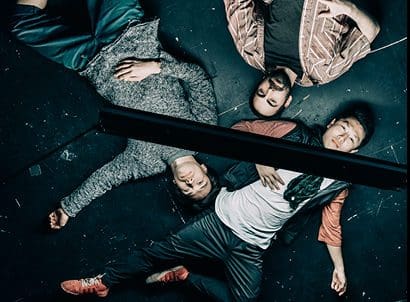 What it’s Like is the first production on The Theatre Centre’s eight work Dance Card—an initiative bringing a wealth of contemporary dance to The Theatre Centre’s stage during their 2016/2017 season. What it’s Like is a co-production between The Theatre Centre and choreographer Heidi Strauss. The work was created in residency at The Theatre Centre, and this is evident in the collaborative experimentation that defines the piece.
What it’s Like is the first production on The Theatre Centre’s eight work Dance Card—an initiative bringing a wealth of contemporary dance to The Theatre Centre’s stage during their 2016/2017 season. What it’s Like is a co-production between The Theatre Centre and choreographer Heidi Strauss. The work was created in residency at The Theatre Centre, and this is evident in the collaborative experimentation that defines the piece.
The performance begins even before we are ushered into an intimately confined space, the instruction to “trust” providing me a sense of (…nervous, if I’m being honest) anticipation. Competition and camaraderie are the work’s central themes, while the physical and emotionally fraught nuances of “brotherhood” are explored.
Near the beginning of the show the three dancers, lying with heads close together, navigate a space that is constrained by both the press of the audience around them as well as a low hanging fluorescent light giving them about two feet of vertical clearance. One of the final scenes returns to this construct while feeling much more expansive, the dancers movements are again constrained, but this time by a series of red lazer trip wires that delineate their space and force them to navigate over, under, around, and finally through them. The relationship between intimacy and constraint recur thematically throughout What it’s Like, a device used to meaningful depict male friendship and bonding.
The non-linear narrative of the piece roams through the nearly two hour performance, in the sense of the story, but also in the physical vocabulary and actual changes of space. Dancers/co-creators Michael Caldwell, Luke Garwood and Naishi Wang are charismatic, generous and warm in their interactions with each other and those of us in attendance. The relationship between performer and audience feels informal, more that we have been invited to share in a long developed and well honed friendship rather than a crafted work. The space shifts often and we the audience are invited to co-create the performance landscape in accompaniment with the dancers, thus challenging our own senses of place and intimacy. Although friendly and informal, the work does not lack for emotional depth or masterfully crafted movement. There are raw moments of vulnerability as the dancers at various times recount past experiences that evoke the sense-feelings of their memories, while also moving with an athletic prowess through intricate choreography.
The show begins with a shedding of “baggage”, an invitation to leave accoutrement behind if only for a couple of hours… and ends with a communal reclaiming of our external trappings, with, of course, the weight of contemplation added in.
